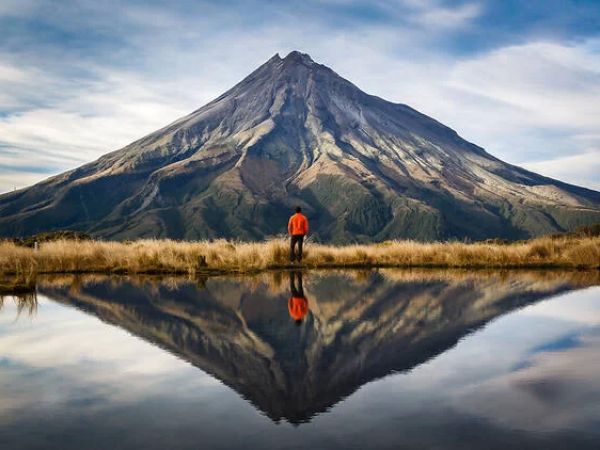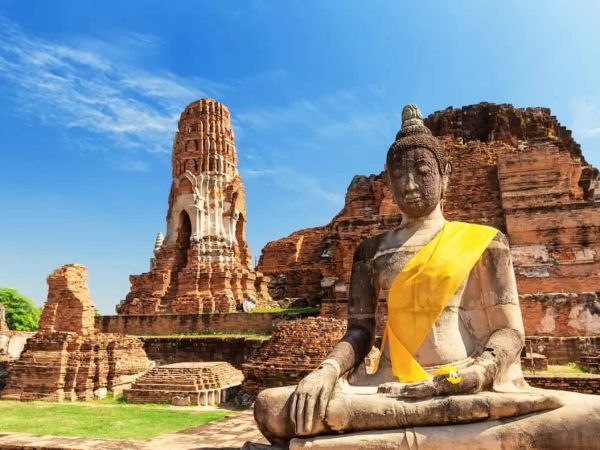Most Famous Landmarks in India: Top Must-Visit Destinations
- 1. Taj Mahal: The Eternal Symbol of Love
- 2. Qutub Minar: A Testament to India’s Islamic Architecture
- 3. Amber Fort: A Majestic Fortification in Jaipur
- 4. Red Fort: A UNESCO World Heritage Site in Delhi
- 5. Gateway of India: Mumbai’s Iconic Monument
- 6. Victoria Memorial: A Glimpse of British Colonial Architecture
The Taj Mahal: The Eternal Symbol of Love
Located in Agra, the Taj Mahal is undoubtedly one of the most famous landmarks in India. Built by Emperor Shah Jahan in memory of his wife Mumtaz Mahal, this white marble mausoleum is a symbol of eternal love. Its breathtaking beauty attracts millions of visitors each year. The Taj Mahal is not only a historical landmark but also an architectural masterpiece, showcasing the grandeur of Mughal architecture. Whether you’re taking a guided tour or simply marveling at its beauty from afar, a visit to the Taj Mahal is an unforgettable experience.
Qutub Minar: A Testament to India’s Islamic Architecture
Standing tall in Delhi, the Qutub Minar is a towering monument that reflects the rich history of India’s Islamic architecture. At 73 meters, it is the tallest brick minaret in the world. The minaret is adorned with intricate carvings and inscriptions, and it holds great historical significance as part of the Qutub Complex, a UNESCO World Heritage Site. Visitors can explore the surrounding ruins and learn about the historical events that shaped this region.
Amber Fort: A Majestic Fortification in Jaipur
Amber Fort, located on a hilltop in Jaipur, Rajasthan, is one of the most famous landmarks in India. Known for its magnificent architecture, the fort is a blend of Hindu and Mughal styles. The grand courtyards, stunning palaces, and intricate artwork make Amber Fort a popular tourist destination. A ride on an elephant up to the fort adds an authentic touch to the experience. The fort offers panoramic views of the city, making it a must-visit attraction for history enthusiasts and nature lovers alike.
The Red Fort: A UNESCO World Heritage Site in Delhi
The Red Fort, also known as Lal Qila, is another iconic landmark located in the heart of Delhi. This imposing fortress, built by Mughal Emperor Shah Jahan in the 17th century, is a prime example of Mughal architecture. The fort complex includes impressive gates, stunning gardens, and historical museums. It is here that India’s first Prime Minister, Jawaharlal Nehru, raised the national flag on Independence Day in 1947. A visit to the Red Fort offers insight into India’s colonial past and its struggle for independence.
Gateway of India: Mumbai’s Iconic Monument
The Gateway of India, located in Mumbai, is one of the most famous landmarks in India and a symbol of the country’s history during the British Raj. This grand archway overlooks the Arabian Sea and was built to commemorate the visit of King George V and Queen Mary to India in 1911. Visitors can take a boat ride from the Gateway to explore nearby attractions, including Elephanta Island. It’s also a perfect spot for photography and offers a beautiful view of the sea.
Victoria Memorial: A Glimpse of British Colonial Architecture
Located in Kolkata, the Victoria Memorial is a stunning example of British colonial architecture. Built in memory of Queen Victoria, the monument features a blend of Victorian, Islamic, and Mughal architectural styles. Surrounded by lush gardens, the Victoria Memorial houses a museum that showcases the history of the British Raj and the legacy of Queen Victoria. It is a peaceful place to reflect on India’s colonial past and the journey towards independence.
India’s landmarks offer a window into its rich cultural heritage and diverse history. Whether you’re exploring ancient temples, stunning forts, or colonial monuments, these famous landmarks are essential for anyone visiting India. Each landmark tells a unique story, and they collectively highlight the beauty and diversity of the country.
Want to explore more? Click here to plan your journey and book your dream tour!






